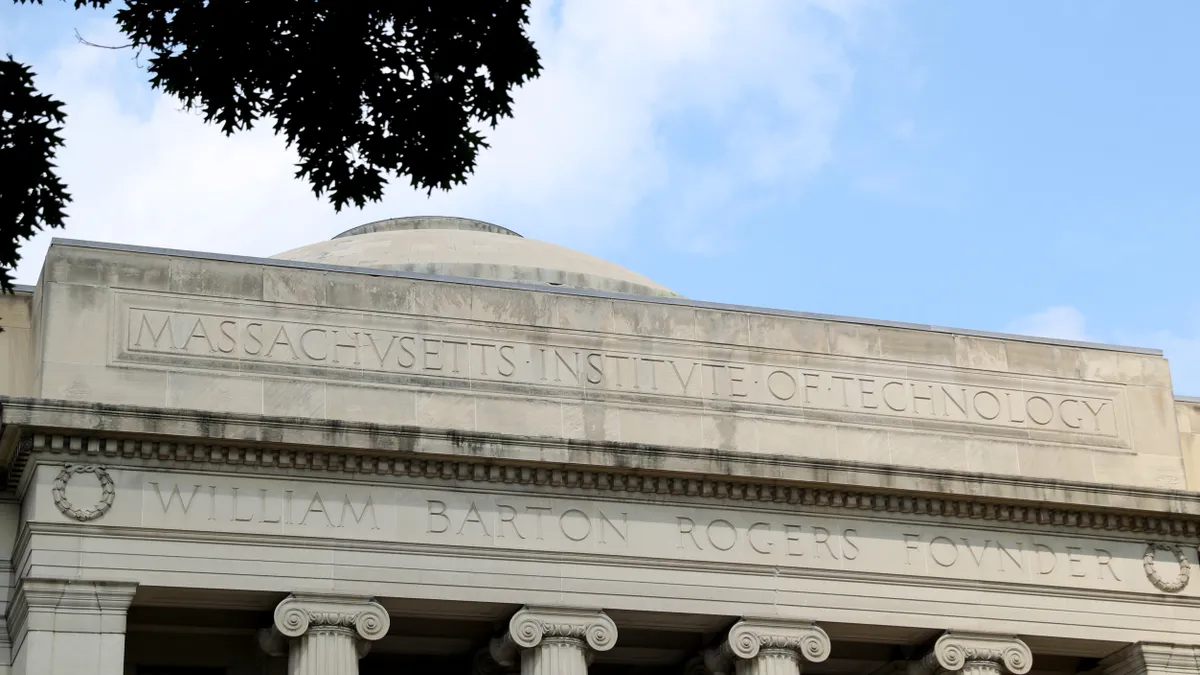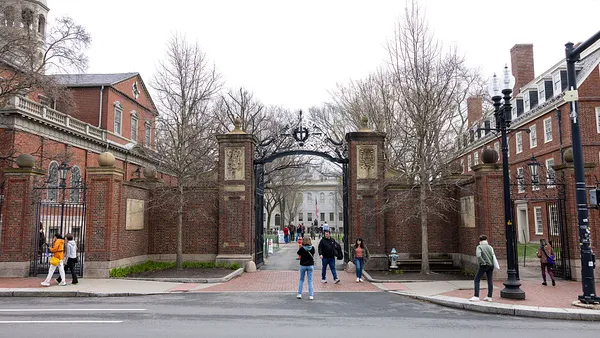Dive Brief:
- Tuition increases spurred by a dramatic drop in state funding over the last decade have contributed to racial and class inequality, explains a new report from the Center on Budget and Policy Priorities (CBPP).
- From 2008 to 2018, per-student state spending at two- and four-year colleges fell an inflation-adjusted 13%, and 19 states cut per-student funding by more than 20%. Tuition prices at public universities rose by 37% nationally, and by more than 20% in 41 states, during that time.
- The report points to research showing that students of color — whose families face systemic barriers to accumulating wealth — are less likely to enroll in a college as its costs go up. Cuts also contribute to income gaps on campus.
Dive Insight:
Research has shown that some low-income students view college as cost-prohibitive and therefore are less likely to apply even if they would qualify for aid that would significantly lower their costs. In 2017, the report notes, the average net price to attend a public four-year institution accounted for 23% of a family's median household income.
But net price breaks down differently by racial group. For white households, it accounted for at least 25% of income in only 16 states. Meanwhile, for black and Latinx households it accounted for 25% of income in 36 states (for which 38 and 46 states, respectively, offered sufficient data).
A recent report from the Institution from Higher Education Policy (IHEP) that looked at net college prices found that nearly all state flagship institutions are unaffordable to low- and middle-income students.
IHEP's report points out that states' share of per-student funding has fallen from 71% to 54% since 2000, while the share picked up by families and students rose from 29% to 46%.
The CBPP report's authors recommend states enhance need-based aid and streamline the programs to encourage more students to enroll in them and avoid confusion among options. They also recommend lawmakers invest in colleges with fewer resources and take precautions to shore up higher education funding to take the edge off of cuts during future market contractors.
Meanwhile, colleges are addressing the issue of cost on several fronts. That includes working with prospective students and their families to be more transparent about their expected costs and helping them understand the FAFSA application process and the financial aid for which they may be eligible.
More than one-third of 2018 high school graduates did not complete the FASFA, forgoing around $4,000 on average, according to an analysis last year from NerdWallet.
Earlier this year, the U.S. Department of Education released a set of recommendations for how colleges can word their financial aid letters to avoid confusing students about the kinds of funds they receive. That includes using terms like "college financing" instead of "award" to describe student loans and include costs such as housing and transportation in their projections.
Yet colleges have work to do. Reviewing 80 institutions' net price calculators, which are required by law, the University of Pennsylvania's Alliance for Higher Education and Democracy found that several used "misleading or incomplete" information, asked students to estimate their own costs, or didn't differentiate between loans and grants.
Clarity on cost is important. Financial constraints and cost concerns could cause lower-income students to enroll in less-selective colleges, thus potentially reducing their future earnings, the CBPP report notes. Further, borrowing heavily to finance college has been "especially damaging" for black and Latino communities due to the higher default rates for those groups, the authors explain.
IHEP researchers recommend lowering sticker prices, adding more grant aid, subsidizing nontuition expenses, offering free tuition to students whose families earn under a certain income threshold and, for states, incentivizing institutions to recruit low-income students by offering help filling out the FAFSA and covering the costs of standardized tests.













